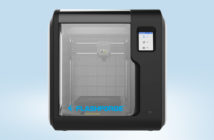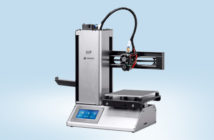3D printing is fun — it’s a little bit like watching magic happen — and can even serve practical purposes too.
As technology improves and becomes more affordable 3D home printers are fast becoming very popular.
Two of the best-selling 3D printers are the FlashForge Finder and QIDI Tech X-One 2 — both are super little starter machines that are great for kids and beginners, but which one is best when we put them head to head?
Take a sneak peek at how they compare:
| Best For... | Style | Durability |
| Print Size (inches) | 5.5 x 5.5 x 5.5 | 5.5 x 5.5 x 5.5 |
| Filaments | PLA only | PLA and ABS |
| Connects to WiFi | Yes | No |
| Ready to Print | Yes | Yes |
| Star Rating |  |  |
Read on to find out who wins in the battle of FlashForge Finder vs QIDI Tech X-One 2…
Contents
How do 3D Printers Work?
The versatility of 3D printers is incredible.
They can make pretty much everything from every day objects to works of art. Cups and bowls, sculptures, machinery elements, tools, toys — even food can be created with one of these bad boys.
They work by building up layers of printing material such as various plastics, metals, wood, or food from the bottom up until a solid 3D object is created.
You start out with an idea of the object you want to create, and either design it on your PC using special 3D software, or make a 3D scan of an existing object which can then be transferred in file format to the 3D printer itself.
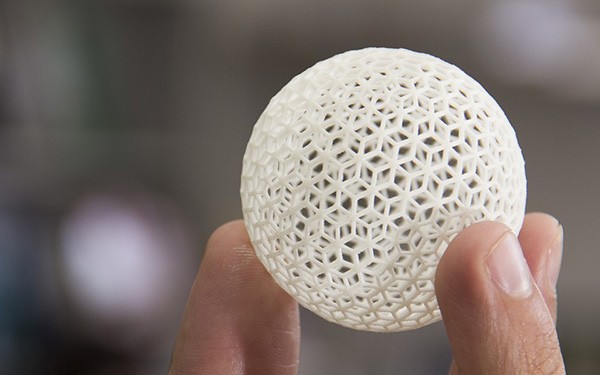
‘Slicing’ software essentially cuts up the 3D design into thousands of tiny layers which are printed one at a time on top of each other and stick together to form the solid object.
The most common printing material for home 3D printers is PLA thermoplastic.
The plastic is fed into the printer in solid form, heated up inside the machine and extruded in melted form via a nozzle which moves around to position itself in the right place to print each layer.
Each time a layer is complete, the nozzle moves up a notch and the next layer is printed on top of it.
Layers are usually printed onto a flat platform or ‘bed’ to keep the design stable and give it a base while it’s being printed.
Depending on the design printing can take a few hours, and the size of the designs you are able to print is dependent on the size of the 3D printer itself.
FlashForge Finder vs QIDI Tech X-One 2: Features
Let’s get the ball rolling by seeing how the major features of the FlashForge Finder and QIDI Tech X-One 2 compare…
Print Dimensions
Both printers are neck and neck in this category.
The FlashForge Finder is capable of printing 3D objects of up to 5.5 x 5.5 x 5.5 inches, which is the same as the QIDI Tech X-One.
Filament Types
The filament is the printing material that the 3D printer can print with.
In this case, the QIDI Tech X-One has the upper hand with a choice of both PLA filament (Polylactic Acid – a biodegradable thermoplastic) and ABS filament (Acrylonitrile Butadiene Styrene – a tough yet slightly flexible thermoplastic).
The FlashForge Finder is capable of printing with PLA filament only.
Ready to Print (or requires assemblage?)
Both the FlashForge Finder and QIDI Tech X-One come assembled and ready to print — only minimal setup and calibration is required.
Great news for beginners and people who like to get things done quickly!
PC/Mac Compatibility
Another feature which these two 3D printers share is that they are both PC and Mac compatible.
Included Software
FlashForge Finder comes with FlashPrint, it’s own dedicated software which allows you to convert your 3D design to a 3D printed model with a just few clicks and gives you the ability to change printing speed and temperature, and layer thickness and height — plus it also allows you to divide your model into several separate parts when it is too big as for one print.
QIDI Tech X-One also comes with free slicing software which works in pretty much the same way, together with a detailed manual.
FlashForge Finder vs QIDI Tech X-One 2: Pros and Cons
So as you can see, in terms of main features these two 3D printers are pretty much neck and neck, with the QIDI Tech X-One 2 scraping a lead thanks to the ability to be able to print with both PLA and ABS filament rather than just PLA, and the FlashForge having the added advantage of Wi-Fi connectivity.
So let’s get into the nitty gritty of the pros and cons of each machine…
FlashForge Finder Pros
Super simple and safe
The FlashForge is really intuitive to use and printing takes only a few taps on the bright color LCD touchscreen to get underway — plus the slide in, slide out build plate makes removing your finished print from the machine a breeze.
This is great because it makes it perfect for people who are new to 3D printing, and even children can use it. It’s also very safe as there is no heated build plate which might hurt little hands.
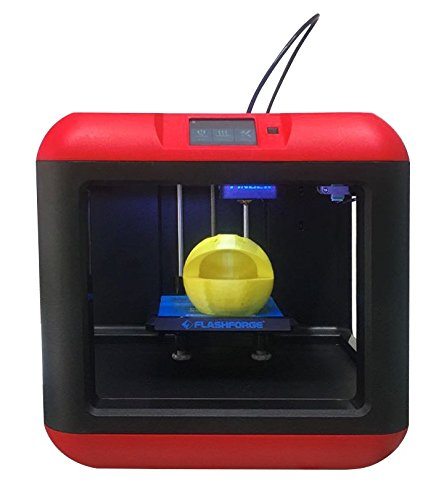
Great connectivity
Not only does the FlashForge feature USB and SD card slots for uploading your designs, it also comes with Wi-Fi connectivity which makes things even easier and is a huge plus for a budget 3D printer like this one.
Runs quietly and no nasty odors
Because the FlashForge Finder 3D printer only prints with PLA filament, there are no evil plastic odors caused when printing.
This is also a really unobtrusive machine which will sit in the corner of the room and quietly get on with printing, making only the minimum of noise.
Take a look at this video to see it in action:
Cool design
We really like the look of the FlashForge.
It’s sleek with rounded edges, it comes in a modern combination of black and a color pop of red. It’s also really compact so slots easily into almost any workspace without taking up too much room.
Great print quality
Ok, so a 3D printer at such an affordable price is not going to be a match for high end machines in terms of print quality, but the FlashForge nevertheless still produces high quality prints considering the price and simplicity of the machine, and the results are sure to delight beginners and kids who aren’t needing to print things to a professional quality.
Good customer service
Should a problem arise with your 3D printer — or you just can’t figure out how to do something — FlashForge are highly regarded for their quality of customer phone support and will be happy to talk you through the problem.
FlashForge Finder Cons
It’s basic
Whilst in one way this is a positive because it keeps things simple and makes the machine easy to use, it also has a flip side.
People who want more professional results, or who want to me able to make more tweaks to their designs or print with a wider range of filament materials to give themselves more creative freedom may find the FlashForge a little limiting.
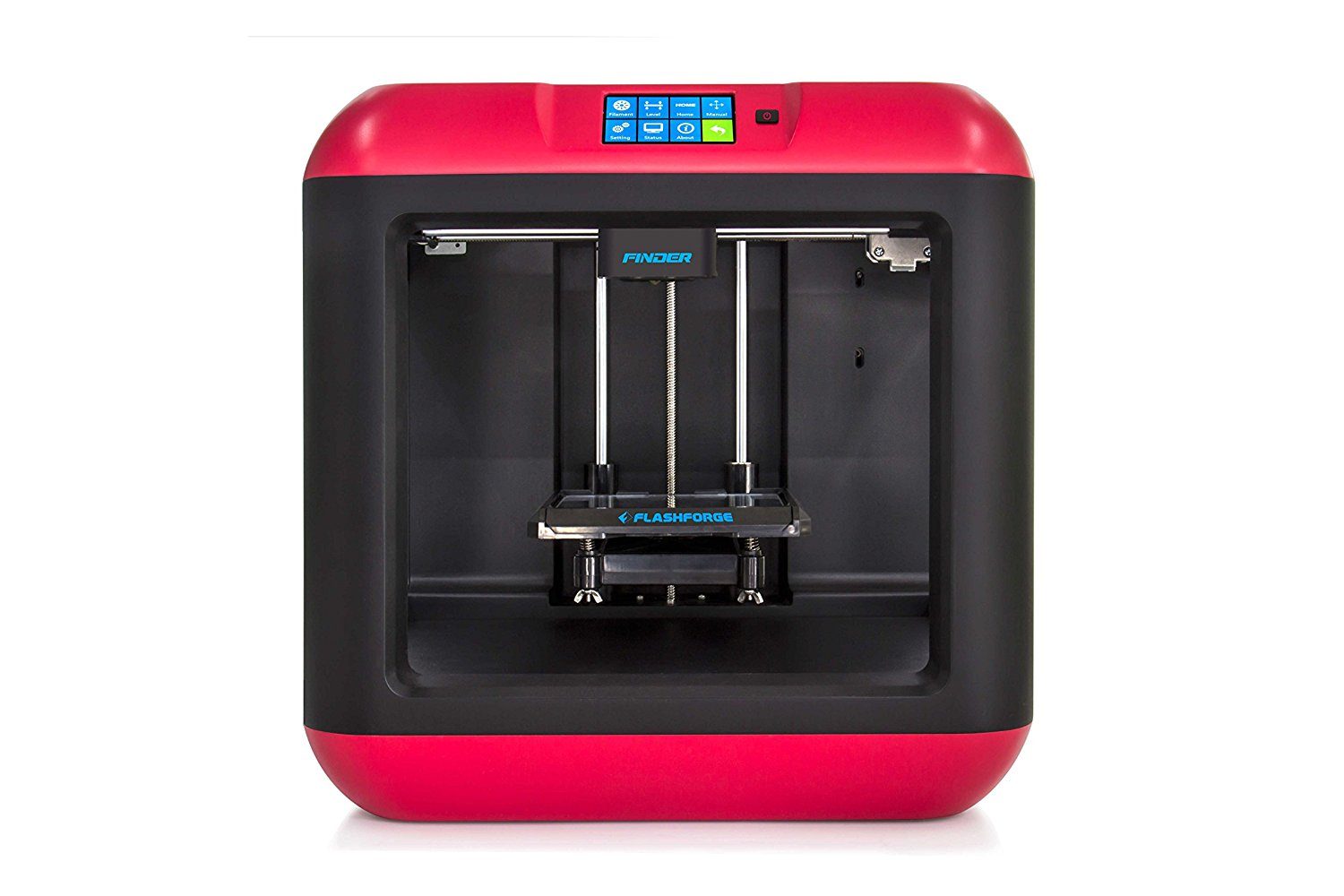
Size matters
Although its convenient size is part of the charm of the FlashForge, it is also quite limiting as it can only handle printing smaller objects.
Yes it’s possible to print larger designs in sections and then fix them together, but those wanting to work on bigger 3D printing projects may find this inconvenient.
It’s also worth noting that for printing larger designs it is better to have a heated print bed, which the FlashForge lacks.
Durability
We like the fact that the plastic alloys used for the frame of the FlashForge keep it lightweight, but this does also mean it is slightly less stable when printing than other metal framed 3D printers — as well as being a little less durable.
QIDI Tech X-One 2 Pros
Incredibly easy to use
Like the FlashForge, the QIDI Tech X-One 2 is an excellent choice for beginners and little ones, and is ready to use right off the bat.
With such a user friendly interface and simple, easy to follow instructions it really is child’s play and we think it might just be the best 3D printer on the market for those new to 3D printing.
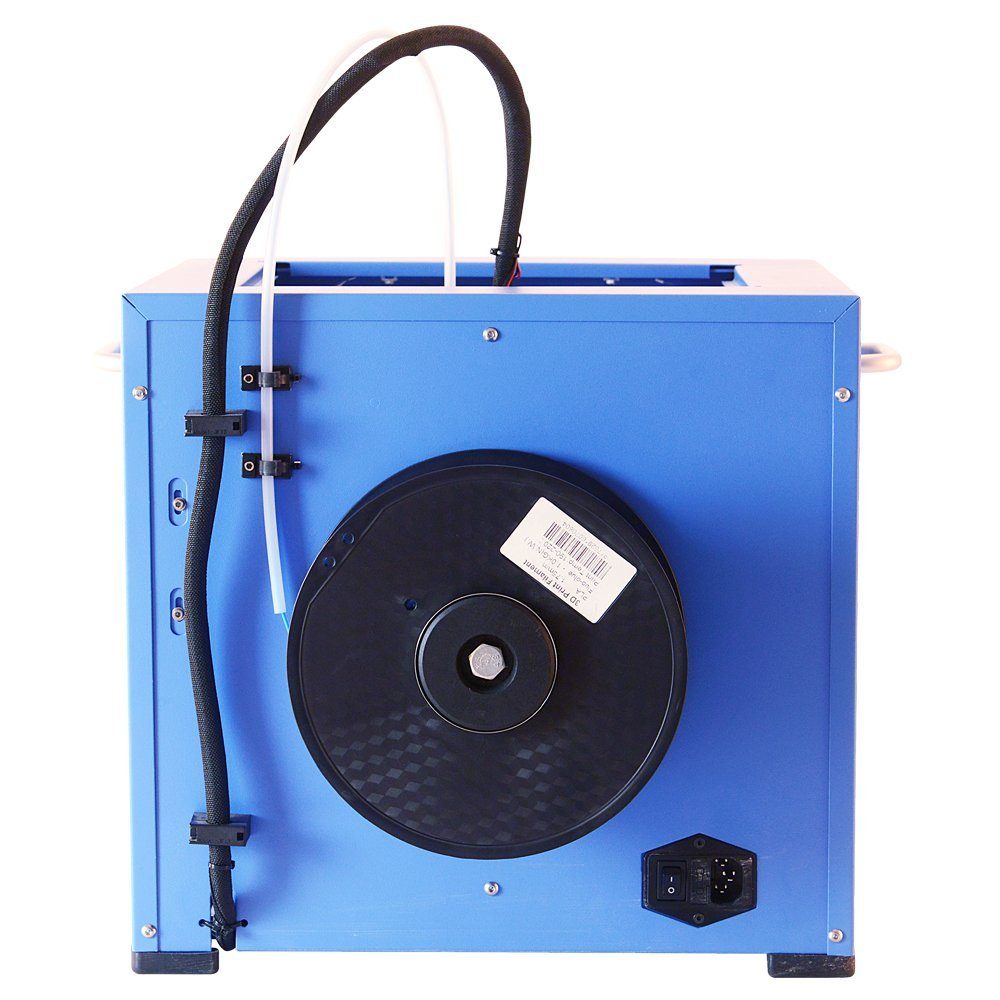
High quality
It might not be quite as pretty as the FlashForge, but the QIDI Tech X-One 2 is made from metal parts which make it super solid and very durable.
It also stays very stable when printing and features a heated print bed so there’s no risk of an uneven finished end result.
It also prints quickly and accurately.
Here’s a quick look at it in action:
Small footprint
Most of us aren’t blessed enough to live in a mansion, and the petite dimensions of the QIDI Tech X-One 2 means it fits neatly into a small workspace without getting in the way.
Its simple, unobtrusive design doesn’t stand out, which makes it all the easier to fit in with your existing home office or craft equipment.
Great customer service
The friendly team at QIDI are always happy to help customers with enquiries via their Qidi Tech One to One service, and are well known for their quick and efficient responses.
The QIDI Tech X-One 2 also benefits from a 6 month warranty in the unlikely event that it should need any repairs or replacement of spare parts.
Easy set up
Almost effortless to set up, and needing no initial fiddly calibration, the QIDI Tech X-One 2 really is ready right out of the box, making it a good option for those of us who are a little more technically challenged or who don’t want any added hassle.
QIDI Tech X-One 2 Cons
Limited connectivity
Although Wi-Fi connectivity is a rare feature of cheap 3D printers, this is one thing that the QIDI Tech X-One 2 lacks in comparison to the FlashForge.
However, it is still possible to upload files to the printer via USB or SD card, so whilst Wi-Fi would be more convenient it is still quite easy to transfer your files.
Weight
The metal components of the QIDI Tech X-One 2 are what give it such great stability, but that comes at a price.
All those heavy parts give it a weight of over 40 pounds, which makes it a bit of an effort to move around.
Noise factor
The QIDI Tech X-One 2 is slightly on the noisy side, but it’s not ear splitting either. Honestly we think a small amount of noise is a reasonable trade off for the benefit of great stability and print quality.
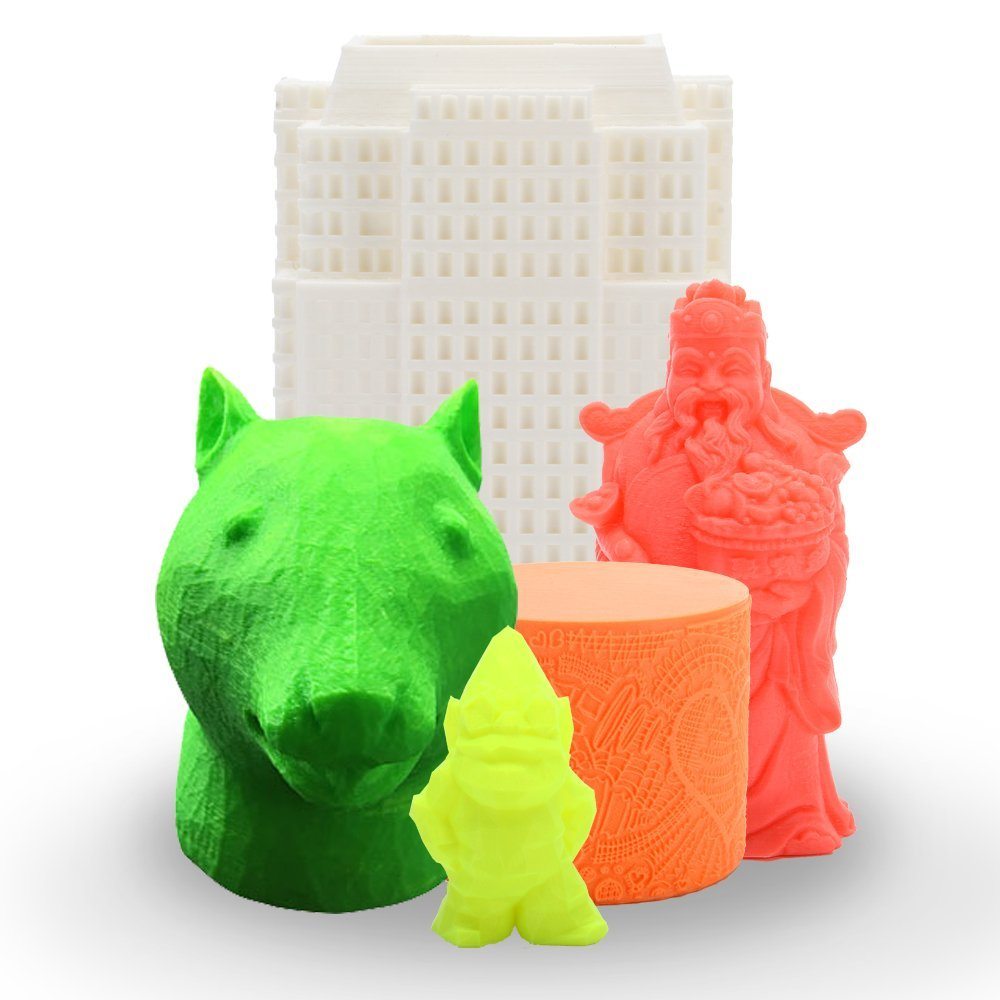
Overall Verdict
Priced within a cat’s whisker of each other, choosing between these two entry level 3D printers is not going to come down to cost.
The FlashForge Finder comes out top for looks, weight, noise and connectivity, but for us the QIDI Tech X-One 2 pips it at the post with better durability, stability and print quality, as well as the ability to print with two different filament types which opens up more creative possibilities.
Plus there’s that 6 month warranty and the fact that it really is an incredibly intuitive 3D printer.
Which 3D printer do you think comes out on top in the battle of FlashForge Finder vs QIDI Tech X-One 2?



